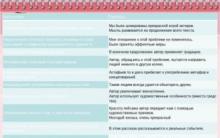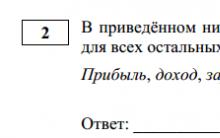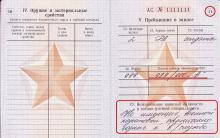Modern Japan uses the modern Gregorian calendar, the same as the rest of the world, including Russia, but excluding Muslim countries.
However, in earlier times other calendar systems were official and are still often used for ceremonial, astrological and cultural purposes.
In particular, in Japan they use: the Chinese sexagenary calendar, counting years by emperors and counting years from the founding of Japan. Let's tell you more about each...
Chinese calendar
As you know, in the traditional Chinese calendar, the years are counted according to 12 zodiac animals or “12 heavenly branches” (junishi). However, in parallel, the count is also carried out according to the “10 earthly shoots” (jikkan) - the senior and junior symbols of natural elements (Wood, Fire, Earth, Gold, Water). Here is a table depicting how this happens: Counting the years Animals (junishi) Elements (jikkan) Name of the year
1 Ne (Mouse) Ki-no-E
(Elder Tree) Ki-no-E-Ne
2 Wushi (Ox) Ki-no-To
(Younger Tree) Ki-no-To-Ushi
3 Tora (Tiger) Hi-no-E
(Elder Fire) Hi-no-E-Tora
4 U (Hare) Hi-no-To
(Younger Fire) Hi-no-To-U
5 Tatsu (Dragon) Tsuchi-no-E
(Elder Earth) Tsuchi-no-E-Tatsu
6 Mi (Snake) Tsuchi-no-To
(Younger Earth) Tsuchi-no-To-Mi
7 Uma (Horse) Ka-no-E
(Elder Gold) Ka-no-E-Uma
8 Hitsuji (Sheep) Ka-no-To
(Junior Gold) Ka-no-To-Hitsuji
9 Saru (Monkey) Mizu-no-E
(Elder Water) Mizu-no-E-Saru
10 Tori (Rooster) Mizu-no-To
(Younger Water) Mizu-no-To-Tori
11 Inu (Dog) Ki-no-E
(Elder Tree) Ki-no-E-Inu
12 I (Boar) Ki-no-To
(Younger Tree) Ki-no-To-I
13 Ne (Rat) Hi-no-E
The two cycles seem to rotate opposite each other. It is easy to calculate that each combination of junishi and jikkan is repeated once every sixty years. Therefore, the sixtieth anniversary (kanreki) is given special significance in Japan.
The last cycle of "junishi-jikkan" began in 1984. Accordingly, 2000 is the year of “Ka-no-E-Tatsu”.
The year in the Chinese calendar usually begins on February 4, as spring begins to arrive in China and Japan at this time.
Counting years according to the reigns of emperors
This is also a Chinese invention adopted by the Japanese. Each emperor, upon ascending the throne, approves the motto (nengo) under which his reign will take place. In ancient times, the emperor sometimes changed his motto if the beginning of his reign was unsuccessful, or if he wanted to mark some important event in his life.
During the Meiji Restoration, the practice of changing the motto during the reign was prohibited. Now each reign of the emperor corresponds to exactly one motto.
The beginning of the motto of the reign is considered the first year of a new historical period. All nengos are unique, so they can be used as a universal chronology scale.
The Heisei (Peace and Tranquility) period, like the reign of Emperor Akihito, began in 1989. Accordingly, 2000 is the 12th year of the Heisei period.
Counting the years since the founding of Japan
During the Meiji Restoration, a unified Japanese chronological system was introduced, originating in 660 BC - this is the legendary date of the founding of the Japanese state by Emperor Jimmu. Generally speaking, this system has existed since ancient times, but with the introduction of the system of mottos of government it was forgotten.
This system was only truly used until the end of World War II. Now the memory of it is preserved only in the naming system of Japanese aircraft of those years. The last two digits of the numerical designation of the aircraft model corresponded to the last two digits of the date of acceptance of this modification into service.
Thus, the legendary carrier-based fighter "Mitsubishi A6M2 Model 21 "Reisen" ("Zero" or "Ziki" in the American classification) was marked "Type 0", since it was commissioned in 2600 from the founding of Japan, or, accordingly, in 1940
You encounter “unusuality” at every step, but this is the topic of other articles. Today we will get acquainted with the Japanese chronology, which is also unusual in nature. I would like to ask a question, what year is it now in Japan?
The Gregorian calendar in Japan was adopted on January 1, 1873, at the instigation of countries that persistently demanded that Japan abandon its policy of self-isolation. Before this event, the traditional calendar of Japan was nengo:, which means era, epoch.
A new era began with the arrival of a new emperor. The imperial court determined the motto of the era of the new reign, with which the aspirations and hopes of the country were connected. Such names of eras as: Genna - the beginning of harmony, Empo - lasting wealth, Hoei - prosperous eternity, Showa - enlightened world and many other mottos of the reign indicate that each emperor invested in his reign an idea, the goal to which he strove. And with each arrival of a new emperor, the era and its reckoning began anew, from the first year.
In cases where the beginning of the reign was unsuccessful or disasters befell the country, the emperor changed the name of the era, which was supposed to change the situation in the country and the record of the era began anew. The Japanese hoped that changing the name of the era would contribute to the country's prosperity. This has always been the case, but during the Meiji restoration (1868-1889) it was forbidden to change the motto during the reign.
IN In the traditional Japanese calendar, the beginning of the year corresponded to somewhere in the middle of the period of time located between the winter solstice and the spring equinox. The years were divided into twelve months. A month consisted of 29 or 30 days. In order for the calendar to coincide with the movement of the Earth around the Sun, the Japanese periodically inserted an additional month into it.
In addition to the listed chronology systems, there was another system in Japan and chronology is an ancient calendar system, the countdown of which begins from 660 BC. It was in this year, according to legend, that Emperor Jimmu founded the city. According to this chronology, for example, 1940 (in modern terms) corresponded to 2600 from the founding of Japan.But this system was in effect only until 1945.
Today, Japan still has two chronology systems:
the first is traditional - the countdown starts from the beginning of the reign of the emperor
the second modern one is from the birth of Christ.
So, according to the traditional calendar, now (for 2013) it is the 25th year of Heisei in Japan. The Japanese use the traditional calendar, and it is also widely used in everyday life.
Modern Japan has four eras of government, these are:
- Meiji era - enlightened rule, which began in February 1867 and lasted 45 years,
- Taisho era - great justice, began in July 1912, lasted 15 years,
- Showa era - enlightened world, began in December 1926 and lasted 64 years
- and the Heisei era - the establishment of peace, which began on January 7, 1989, from the reign to the present.
In Japan everything is different. They dress differently, eat and sit differently, count days and years differently. It can be difficult for Westerners to understand what year it is in Japan. Since ancient times, the Japanese have taken the Chinese lunar-solar calendar as a basis, but this nation, with its special mentality, has made special changes to it. Now it is used mainly for ceremonies, astrology or some cultural purposes. We will try to understand the calendar in Japan in detail. We will also clarify what year it is now.
Calculation of years - methods
The Japanese call their island state "Nippon", which means the birthplace of the sun, the Chinese translated this name as the Land of the Rising Sun, the Russians distorted it to the word "Japan". These islands had three ways of calculating years, two of which are still in use today. But we will mention all three.
The oldest, which is not used now, went back to the legendary foundation of Japan more than five hundred years BC. e.
The Japanese copied another system from the Chinese. The Celestial Empire at that time was the most developed of all Asian countries. The year when a new emperor began to rule, after the death of the previous one, began a new countdown. It’s easy to find out what year it is in Japan. 28th 年 (the character for the word "year") reign
In 1873, the country adopted the Gregorian calendar. It gradually took root and is used on a par with the traditional one. 2017年 is what year it is now in Japan. The year is written first, then the month, and the last is the date. All this is written in our traditional numbers. May 13, 2017 will look like this: 2017-5-13.
Emperor's reign
We keep our count of days from the Nativity of Christ without changing anything. In Japan, a different practice has developed. When a new emperor ascends the throne (he does not actually rule), he chooses a motto for himself - nengo, under which the time of his power will pass.
This motto, composed of two prosperous hieroglyphs, is required so that the entire period of reign passes smoothly, without cataclysms. A special state commission, which studies ancient Chinese scrolls with classical literature for its selection, was created and is being created in Japan. What is the year now? This period is called the Heisei era, which means “Peace and Tranquility.” It began in 1989, when the divine chosen one Akihito came to power.

Cyclic calendar
The West is already quite familiar with it, but celebrates the onset of the Eastern New Year on its own dates, which do not coincide with the original source. According to this sixty-year cycle, each year is ruled by an animal and a special element.

There are five of these elements ruled by Saturn: wood, fire, metal, water and earth. They have their own colors: blue, red, yellow, white, black. In addition, the path of Jupiter is divided into twelve segments, each of which corresponds to an animal. They go in the order in which they came to the Buddha: rat, horse, bull, sheep, tiger, monkey, hare (rabbit), rooster, dragon, dog, snake, pig. We have already celebrated the New Year and know what year it is in Japan - the Rooster, of course. His symbol appeared on many European trinkets, dishes and clothing.
Calculation in Japan
What is the year now? The chronology in Japan forces Europeans to look into the astrological signs of the coming year. We strive to please the new creature that comes, to prepare delicious dishes for him, so that he will protect us for a whole year. Of course, this is just a ritual that adds spice to the New Year holiday and is forgotten in Western countries the next morning. But in Asian countries, the New Year, which falls between the twentieth of January and February, is celebrated on a grand scale. Fireworks and all rituals are required. For example, the Japanese visit Shinto shrines, buy a toy Daruma deity, make a wish and paint one of his eyes. When the year ends, if the wish has come true, then Daruma’s second eye is painted over, and if not, then it is not touched. In any case, the wooden doll is sent back to the temple where it was bought and burned in special bonfires.
Sakura time
From the north, from the Sea of Okhotsk to the south, where Japan is washed by the Pacific Ocean, there is an archipelago with almost seven thousand islands. Its length is three and a half thousand km. Therefore, asking about the weather is considered good manners for any Japanese.
The Japanese are really looking forward to the beginning of warm winds, when winter will be replaced by spring blooming with cherry blossoms.

Only she appears on different islands at different times. In the south, sakura can herald spring as early as February, but in the north and Aomori only in May. So if they ask: “What time of year is it now in Japan?”, then you need to navigate not by the calendar, but by the geographical location of a particular island. It’s like in our country - on the Black Sea coast spring is already about to turn into summer, and in the Moscow region in May piercingly evil northern winds blow, cold rain falls, and there are frosts at night. And according to the calendar, it’s spring, which residents of the Moscow region cannot wait for.
We hope that it is now clear to everyone how the current year is calculated in Japan.
Hello, readers of my blog dedicated to the land of cherry blossoms. When you visit this country, due to ignorance, you can easily get confused in dates and years. Instead of the usual four digits of the year (for example: 2016), there are only two. The thing is that the Japanese chronology differs from the generally accepted world calendar. Now I will tell you exactly what the differences are.
How the Japanese used to count years
There are several chronology systems in Japanese history. To understand what year is going on in Japan now, you need to figure out exactly how they calculate time, how they count years. In the country of chrysanthemums, they do this in a special way.
From the history

The earliest in history was, borrowed from neighboring China, counting according to a 60-year cycle. In order to indicate each cycle, two hieroglyphs were used (a cyclic sign and a zodiac sign). The cyclic signs are called "jikkan", these are the elements - wood, metal, water, fire and earth. The Japanese call them trunks, and the zodiac signs call them branches. It turns out that the name of the year consists of a trunk and branches (because there are more of them). Since there are only 6 trunks and 11 branches, when the first trunk coincides with the first branch, exactly 60 cycles will pass and a new countdown will begin. Now such a complex system is almost forgotten and is used sometimes, only a 12-year small cycle.
By Emperors
 In the Japanese calendar, the countdown begins from the reign of each Emperor. The first Emperor began to rule - the countdown began, another came to power - they began to count again, from the first year. The reign of each is a new era. This system of counting years is called “nengo” (年号・era, epoch).
In the Japanese calendar, the countdown begins from the reign of each Emperor. The first Emperor began to rule - the countdown began, another came to power - they began to count again, from the first year. The reign of each is a new era. This system of counting years is called “nengo” (年号・era, epoch).
To indicate the name of the year, in one version of the calculation, the name of the Emperor and the number in order from the beginning of the reign are indicated. But earlier emperors were called completely differently than they are now. To designate a ruler, it was not his name that was used, but, for example, the name of the palace in which he lived or the posthumous names of Emperors. By the way, they were very long and awkward to pronounce and write. Therefore, such numbering was abandoned.
In the second option, you need to indicate the motto of the era and the year of the Emperor's reign. Such a system still exists in Japan. And this interesting way of counting time was also borrowed from China.
Motto of the era
Coming to the throne, each Emperor determined his own motto, under which the years of his reign passed. The motto was needed in order to use it to indicate some significant event or make a happy prediction, to magically influence the quality and character of the new era. To compose the motto, we tried to use only happy combinations of hieroglyphs.
 Here are some, for example, mottos:
Here are some, for example, mottos:
Empo– long-lasting wealth;
Thai- great changes;
Genna– quick agreement;
Hoei– eternal prosperity;
Showa- the world is enlightened.
All the mottos carried good ideas, albeit similar to pipe dreams. Although, when an era began very badly, with disasters and destruction, it could be renamed and the countdown started again. However, this soon became prohibited.
The choice of the motto was a very important state moment. Even a special imperial commission was created to help the ruler decide on a motto. Most often, the phrase was borrowed from classical literature. There are a total of 252 mottos of Imperial Japanese rule.
How many reigns does modern Japan have?
The following periods are distinguished in modern Japan:
To determine which year according to the Japanese calendar corresponds to our calculation of years, you can simply use special ready-made tables, which are found in almost all notebooks. If you don’t find a printed table, it’s very easy to find the data online. For those who are too lazy or don’t have time to look, look at the table in the picture. Now, I think, it won’t be difficult for you to determine what kind of year, for example, 2016 will be in Japan. I’ll give you a hint, now it’s the 28th year of Heisei, and in Japanese it will be written like this: 平成28年.

What do they think now?
In fact, in Japan there are now two options for counting years: the Japanese calendar and the European calendar (counting years from the Nativity of Christ). However, when writing a date on the European calendar, the Japanese will write the year first, then the month, then the day. For us, of course, this writing is not very convenient; you can get confused in the Japanese calculation of years, even according to our classical calendar.
Where do the Japanese use traditional chronology?
 In official documents, technical documentation, certificates and other serious international papers, there are usually two dates: traditional and from the Nativity of Christ. On financial and banking papers, the date must be indicated in the traditional style. Emperor dating is often used in history books. Due to the fact that two different dates are put even on travel tickets, some tourists have difficulty figuring out which date they have a ticket for.
In official documents, technical documentation, certificates and other serious international papers, there are usually two dates: traditional and from the Nativity of Christ. On financial and banking papers, the date must be indicated in the traditional style. Emperor dating is often used in history books. Due to the fact that two different dates are put even on travel tickets, some tourists have difficulty figuring out which date they have a ticket for.
Another timing system
In Japan, there is another version of chronology, the absolute chronology scale. In this system, the starting point is 660 BC. According to legend, it was at this time that Emperor Jimmu founded the Japanese state. All calculations were carried out by Miyoshi Kiyoyuki. However, years were counted this way only until the period of the Second World War, and then this calculation was abolished. By the way, such a calculation left its mark on the markings of the aircraft; the last two digits corresponded to precisely this chronology system.
Well, you have learned about the special Japanese chronology system. Now you can easily determine what numbers are on your ticket or what date to put on Japanese documents. Thank you for spending time reading this interesting information. Your friends from social networks may find out about this, please share the information with them. Subscribe to updates, I have something to tell you! All the best!
Eastern astrology, eastern calendar, marks years in 12-year cycles. The name of each year corresponds to a specific animal, of which there are twelve.
|
Zoological name of the year |
Years of birth of people |
||||||||
|
Rat. Mouse |
|||||||||
|
Buffalo. Bull. Vol. Cow |
|||||||||
|
Tiger. Snow Leopard |
|||||||||
|
Cat. Hare. Rabbit |
|||||||||
|
The Dragon. Crocodile |
|||||||||
|
Goat. Sheep. Ram |
|||||||||
|
Monkey |
|||||||||
|
Rooster. Chicken |
|||||||||
|
Dog. Dog |
|||||||||
|
Boar. Pig |
|||||||||
Year of the Monkey
These people are unreliable, contradictory, clever, inventive, original. They achieve success in any activity. They are easy to convince and distract. Any obstacle spoils their mood, because... they want everything this very minute.
They are temperamental, quick-tempered, but easy-going. Tricky. are distinguished by conceit and self-will. They achieve fame, unless the Tiger people interfere with them.
Compatible with the Dragon and Rat. People of the Snake, Boar, and Tiger signs are not suitable.
Year of the Rooster (Chicken)
Deep thinkers. Gifted people. They love work and are devoted to their work. They are somewhat eccentric and do not immediately get along with people.
They are always confident that they are right and are usually right. Often very lonely and withdrawn. Timid. What is planned is always realized. They have ups and downs of feelings. Streaks of failure alternate with streaks of success. They can be selfish and overly straightforward. Always interesting and capable of bold actions.
People of the Snake, Dragon, and Ox are suitable for friendship. People of the Tiger, Horse, Monkey, Sheep and Boar are not suitable at all.
Year of the Boar (Pig)
Brave, capable of self-sacrifice. They put every effort into everything they do. They recognize only the direct path. Honest, courageous people. It's difficult to get along with people. Friends, of whom there are few, are faithful until the end of life. They won't leave friends in trouble. taciturn. Curious. They are quick-tempered, but do not like quarrels. They are generous and attentive to those they love.
They don’t shy away from problems. They sometimes act under the influence of a momentary impulse. Rabbit and Sheep are suitable for boar. Not compatible with the Snake.
Year of the Dog
Faithful. Honest. Fair. They inspire confidence because... know how to keep secrets.
Somewhat selfish, very stubborn and eccentric. They don’t strive for wealth, but they always have money. Emotional. Cold towards strangers. They are critical and have a sharp tongue. They stand for justice, they know what they are fighting for.
The matter is brought to an end. Victory usually goes to them. They make good leaders, revolutionaries.
Suitable for love, friendship, life partners: Horse, Tiger, Rabbit.
Incompatible - Dragon, Sheep.
Year of the Tiger
Sensitive. Energetic. Prone to thinking. They can be irritable. They are generally respected, but often come into conflict with elders and superiors. The decision is appreciated, but often it is too late. Suspicious and selfish. Strong, courageous people. Usually leaders, revolutionaries.
People are suitable for them - Horses, Dragons, Dogs. Incompatible - Snake, Monkey.
Year of the Ox (Ox)
They inspire confidence. They can be eccentric, impatient and lose their temper easily. Fury knows no bounds. In such cases they should be feared. Not very talkative. But they are also eloquent. They usually have good physical and mental abilities. They are known as people with a light character. Sometimes they are stubborn. They don't like contradictions. Love is looked at as a sport. The main thing for them is their homeland, work, family.
Well compatible with Snake, Rooster, Rat.
Incompatible with Sheep.
Year of the Cat (Hare)
Individual. Talented, ambitious. They are always lucky.
Virtuous, reserved. They have good taste. They inspire trust and admiration. Financially lucky. They love to gossip, but are tactful and kind. They are affectionate with those they love, but rarely attached to their immediate family. They almost never lose their temper. They have excellent business qualities. Conscientious. Not always tactful, prone to melancholy. Conservative. Prudent.
Suitable for them: Sheep, Boar, Dog.
Incompatible with the Rooster.
Year of the Rat (Mouse)
Externally attractive. They are purposeful, hardworking, and strive to acquire property. Accurate to the point of pedantry. Thrifty. Be generous with those you love. They get angry easily, but maintain external composure. Petty, ambitious. Mostly they succeed and achieve their goals. They are usually honest and open, but many of them are not averse to gossiping.
Correspond to: Dragon, Monkey, Ox.
The Horse is not suitable at all.
Year of the Sheep (Goat)
They have abilities in the field of fine arts. Often shy, prone to pessimism. Helpless in the face of life.
Capricious. They value convenience. They have good taste. They love their job. Reasonable and virtuous.
Mostly financially secure.
For friendship, love, marriage, Horse and Boar people are suitable for them, but Dog and Ox people are not suitable for them at all.
Year of the Dragon
They have excellent health. easily excitable. Sometimes harsh and stubborn. Honest. Emotional. Decisive. You can always rely on them.
Willful. Tend to be kind-hearted. They quickly get rid of their misconceptions. They get married, get married early or don’t get married at all, don’t get married.
Compatible with them: Rat, Snake, Monkey, Rooster.
Incompatible Dog.
Year of the Snake
Taciturn. They are wise from birth. Their financial affairs are always excellent.
They are often vain and selfish. Rely more on themselves. Decisive and purposeful. They feel their failures deeply. Outwardly they are calm, but their nature is passionate. Outwardly, such people are attractive, which often leads to family complications.
They correspond to the people of the Ox and the Rooster.
Tiger and Pig people are not suitable.
Year of the Horse
These people are very popular. They have a good character. They know how to handle money. Skillful and insightful. Sometimes they talk a lot. Talented. Everything is going well for them. Self-confident. Not indifferent to the opposite sex. For themselves personally, they invest maximum strength and passion, with the exception of official duties. They love entertainment, gatherings, and being in the center of events. Independent. Rarely listen to the advice of others.
Tiger, Dog, Sheep are good choices.
Rat doesn't fit at all.
_______________
A source of information: Faces of fate: horoscopes, fortune telling, dream book./ -Kiev: 1993.











Decursive interest calculation
Corporate treasury organization
What does Kystyby mean? Dough for kystyby
Contraindications for beet juice
Weekly horoscope: Love adventures await Scorpios